Cardiac Arrhythmia Therapeutics Market Size
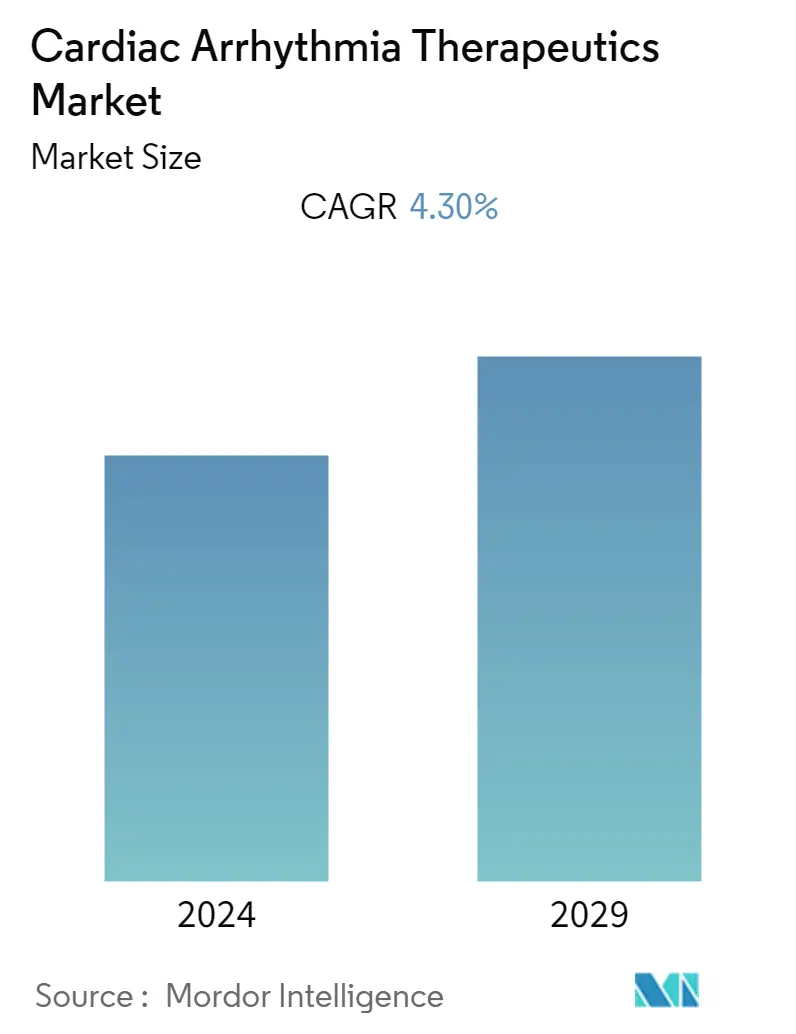
| Study Period | 2019 - 2029 |
| Base Year For Estimation | 2023 |
| Forecast Data Period | 2024 - 2029 |
| CAGR | 4.30 % |
| Fastest Growing Market | Asia Pacific |
| Largest Market | North America |
Major Players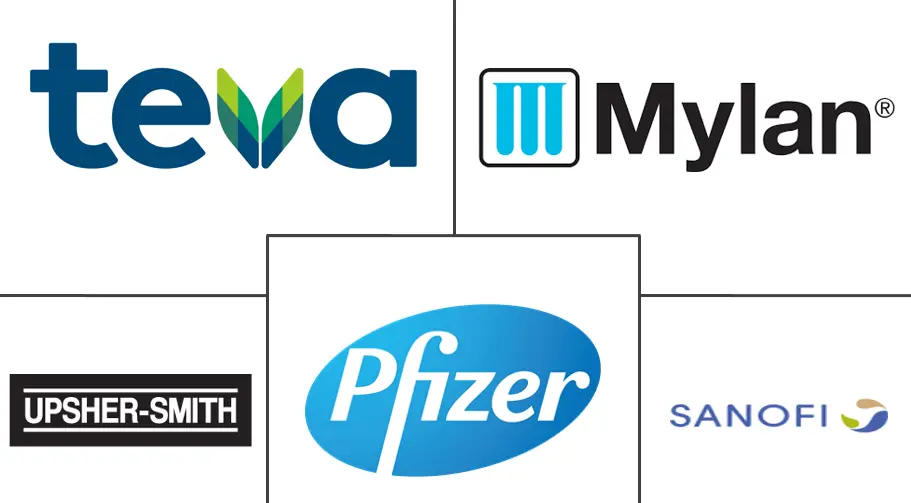
*Disclaimer: Major Players sorted in no particular order |
Cardiac Arrhythmia Therapeutics Market Analysis
The Cardiac Arrhythmia Therapeutics Market is expected to register a CAGR of 4.3% during the forecast period. Arrhythmia is defined as irregular or abnormal heartbeat. Arrhythmia is of two types bradycardia and tachycardia. When the heartbeat is too slow, less than 60 beats per minute, it is known as bradycardia and when it is too fast, more than 100 beats per minute, it is known as tachycardia. Some of the symptoms of arrhythmia are fast or slow heartbeat, sweating, shortness of breath, chest pain, skipping beats and dizziness. Coronary artery disease, high blood pressure, obesity/overweight, excessive use of alcohol, stress, high cholesterol, smoking are the factors which can increase the chance of developing arrhythmia.
The most common type of arrhythmia is atrial fibrillation, which causes an irregular and fast heartbeat. As per the study published in the Journal of Geriatric Cardiology, atrial fibrillation affects millions of people worldwide and left untreated which increases the risk and severity of heart failure, stroke, and death. Furthermore, atrial fibrillation (AF) is predicted to affect 17.9 million in Europe by the year 2060.
Increasing incidences of obesity, chronic diseases, rising consumption of alcohol and cigarettes, high stress, and unhealthy lifestyles, coupled with the growing awareness regarding early diagnosis of cardiovascular diseases are the key driving factors in cardiac arrhythmia therapeutics market.
Cardiac Arrhythmia Therapeutics Market Trends
This section covers the major market trends shaping the Cardiac Arrhythmia Therapeutics Market according to our research experts:
Sodium-channel Blockers Segment is Expected to Hold a Major Market Share in the Cardiac Arrhythmia Therapeutics Market
- Sodium channel blockers are class of drugs that act by inhibition of sodium influx through cell membranes. Blockade of Sodium channels slows the rate and amplitude of initial rapid depolarization, reduces cell excitability and conduction velocity. These blockers are used for the treatment of atrial fibrillation, ventricular tachycardia, supraventricular tachycardia, symptomatic ventricular premature beats, and prevention of ventricular fibrillation.
- According to the Centers for Disease Control and Prevention (CDC), estimates approximately 2 percent of people younger than 65 years old have atrial fibrillation, while about 9 percent of people ages 65 and older have it. Moreover, in the United States, prevalence rate of atrial fibrillation is estimated to rise to 12.1 million by the year 2030.
- Sodium-channel blockers segment holds a significant market share in the cardiac arrhythmia therapeutics market and is anticipated to show similar trend over the forecast period due to easy to consume, no pain, low cost and extended-release effect of drugs.
- Increasing incidences of chronic diseases worldwide, technological advancements and growing awareness regarding early diagnosis of diseases are the key driving factors in the sodium-channel blockers segment.
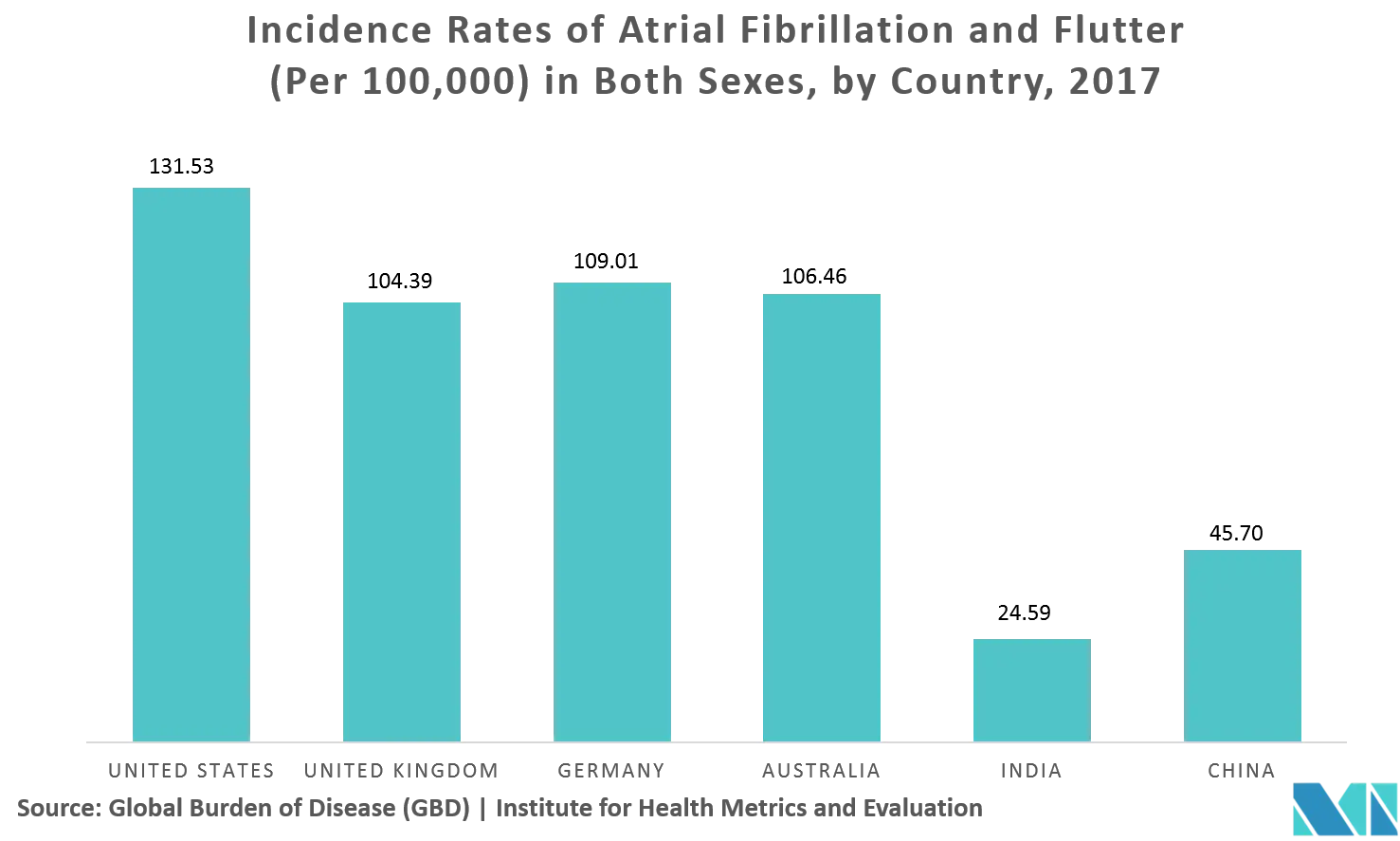
North America is Expected to Hold a Significant Share in the Market and Expected to do Same in the Forecast Period
North America is expected to hold a major market share in the global cardiac arrhythmia therapeuticsmarketdue to increasing geriatric population, high drug consumption & costs, and growing incidence of cardiac diseases.Centers for Disease Control and Prevention, estimates approximately 2.7 million and 6.1 million people in the United States have atrial fibrillation. In addition, in the year 2017, atrial fibrillation was responsible for 26,077 deaths in the United States. Furthermore, presence of top pharma and biotech companies, increasing healthcare spending and presence of well-established healthcare infrastructure is also fueling the growth of the overall regional market to a large extent.
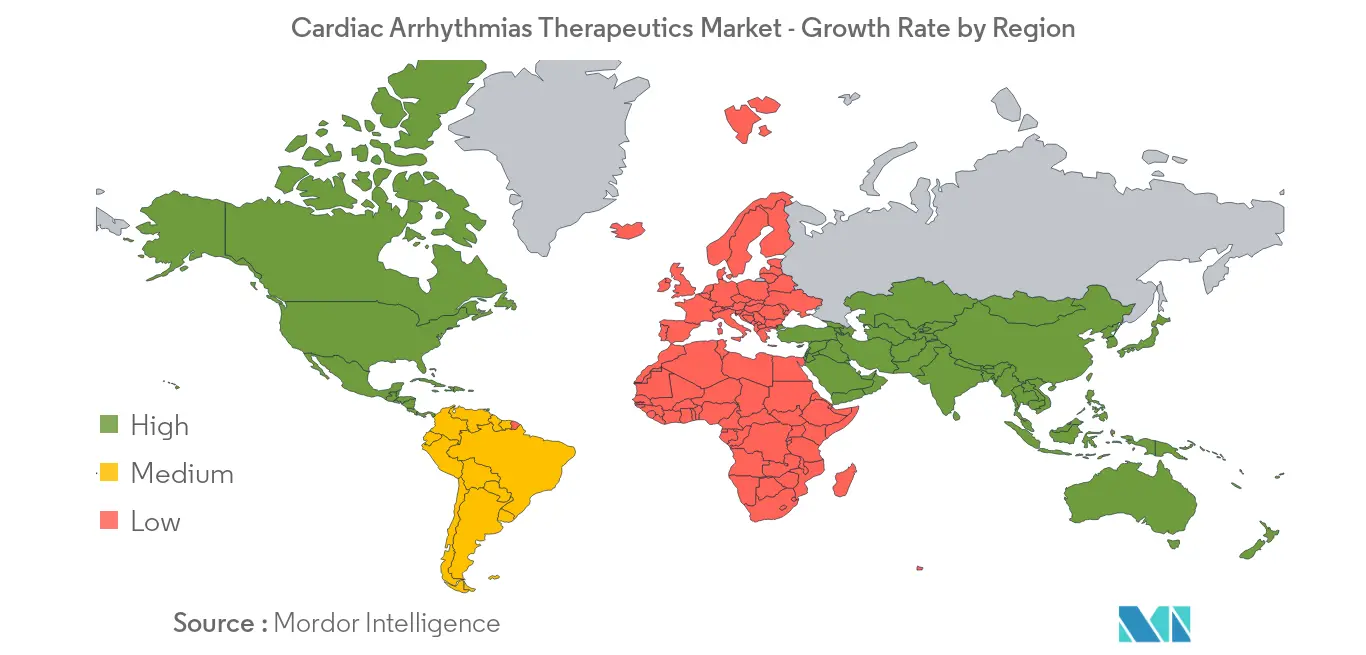
Cardiac Arrhythmia Therapeutics Industry Overview
The Cardiac Arrhythmia Therapeutics Market is fragmented competitive and consists of several major players. In terms of market share, few of the major players are currently dominating the market. Some of the companies which are currently dominating the market are Mylan N.V., Teva Pharmaceutical Industries Ltd, Pfizer Inc, Sanofi S.A, Upsher-Smith Laboratories, LLC, Covis Pharma, Novartis AG, Mayne Pharma Group Limited and Eli Lilly and Company.
Cardiac Arrhythmia Therapeutics Market Leaders
-
Mylan N.V.
-
Teva Pharmaceutical Industries Ltd
-
Pfizer Inc
-
Sanofi
-
Upsher-Smith Laboratories, LLC
*Disclaimer: Major Players sorted in no particular order
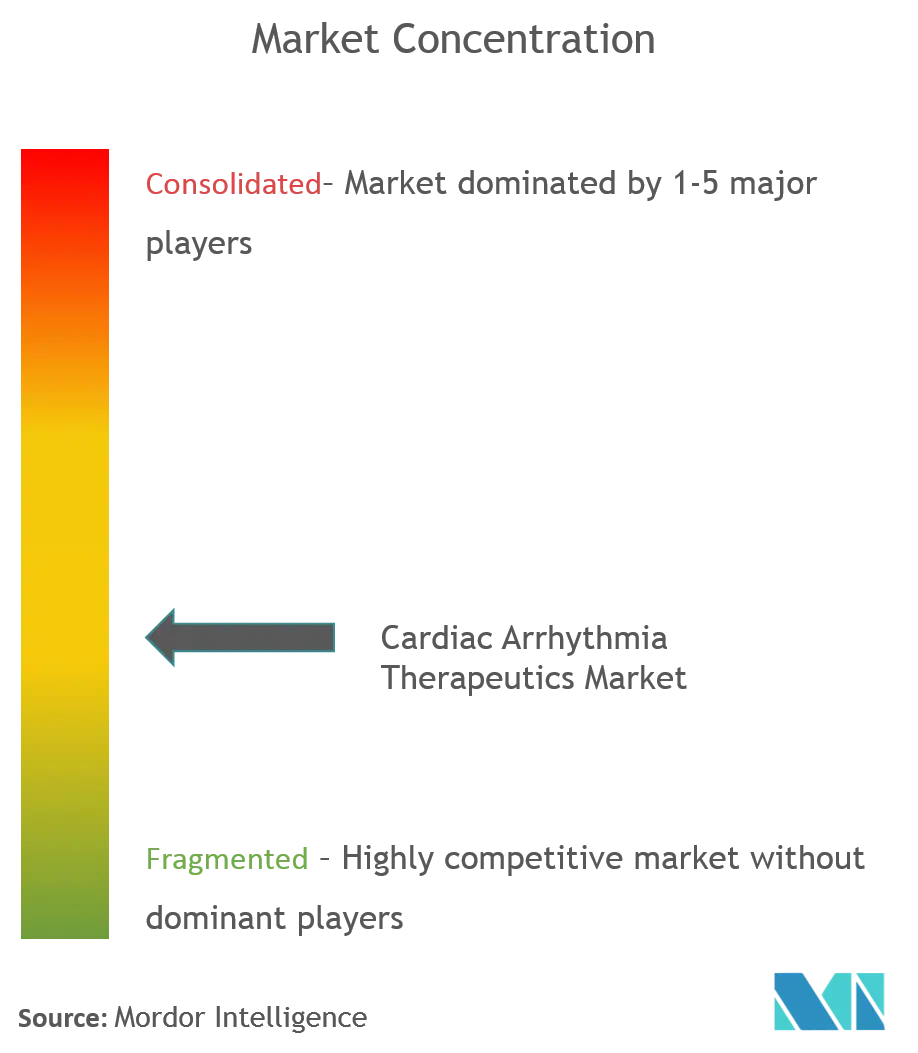
Cardiac Arrhythmia Therapeutics Market Report - Table of Contents
1. INTRODUCTION
- 1.1 Study Assumptions
- 1.2 Scope of the Study
2. RESEARCH METHODOLOGY
3. EXECUTIVE SUMMARY
4. MARKET DYNAMICS
- 4.1 Market Overview
-
4.2 Market Drivers
- 4.2.1 Growing Geriatric Population and Incidence of Chronic Diseases
- 4.2.2 Increasing Investment in Research and Development
-
4.3 Market Restraints
- 4.3.1 Stringent Regulatory Norms
-
4.4 Porter's Five Force Analysis
- 4.4.1 Threat of New Entrants
- 4.4.2 Bargaining Power of Buyers/Consumers
- 4.4.3 Bargaining Power of Suppliers
- 4.4.4 Threat of Substitute Products
- 4.4.5 Intensity of Competitive Rivalry
5. MARKET SEGMENTATION
-
5.1 By Drug Class
- 5.1.1 Sodium-channel Blockers
- 5.1.2 Beta-blockers
- 5.1.3 Potassium-channel Blockers
- 5.1.4 Calcium-channel Blockers
- 5.1.5 Other Drug Class
-
5.2 Geography
- 5.2.1 North America
- 5.2.1.1 United States
- 5.2.1.2 Canada
- 5.2.1.3 Mexico
- 5.2.2 Europe
- 5.2.2.1 Germany
- 5.2.2.2 United Kingdom
- 5.2.2.3 France
- 5.2.2.4 Italy
- 5.2.2.5 Spain
- 5.2.2.6 Rest of Europe
- 5.2.3 Asia-Pacific
- 5.2.3.1 China
- 5.2.3.2 Japan
- 5.2.3.3 India
- 5.2.3.4 Australia
- 5.2.3.5 South Korea
- 5.2.3.6 Rest of Asia-Pacific
- 5.2.4 Middle-East and Africa
- 5.2.4.1 GCC
- 5.2.4.2 South Africa
- 5.2.4.3 Rest of Middle-East and Africa
- 5.2.5 South America
- 5.2.5.1 Brazil
- 5.2.5.2 Argentina
- 5.2.5.3 Rest of South America
6. COMPETITIVE LANDSCAPE
-
6.1 Company Profiles
- 6.1.1 Mylan N.V.
- 6.1.2 Teva Pharmaceutical Industries Ltd
- 6.1.3 Pfizer Inc
- 6.1.4 Sanofi
- 6.1.5 Upsher-Smith Laboratories, LLC
- 6.1.6 Covis Pharma
- 6.1.7 Novartis AG
- 6.1.8 Mayne Pharma Group Limited
- 6.1.9 Eli Lilly and Company
- *List Not Exhaustive
7. MARKET OPPORTUNITIES AND FUTURE TRENDS
** Subject To AvailablityCardiac Arrhythmia Therapeutics Industry Segmentation
Arrhythmia also known as dysrhythmia is an irregular or abnormal heartbeat. It occurs when the electrical impulses that coordinate heartbeats don't work properly, causing heart to beat too fast, too slow or irregularly. Cardiac Arrhythmia Therapeutics Market is segmented By Drug Class and Geography.
| By Drug Class | Sodium-channel Blockers | |
| Beta-blockers | ||
| Potassium-channel Blockers | ||
| Calcium-channel Blockers | ||
| Other Drug Class | ||
| Geography | North America | United States |
| Canada | ||
| Mexico | ||
| Geography | Europe | Germany |
| United Kingdom | ||
| France | ||
| Italy | ||
| Spain | ||
| Rest of Europe | ||
| Geography | Asia-Pacific | China |
| Japan | ||
| India | ||
| Australia | ||
| South Korea | ||
| Rest of Asia-Pacific | ||
| Geography | Middle-East and Africa | GCC |
| South Africa | ||
| Rest of Middle-East and Africa | ||
| Geography | South America | Brazil |
| Argentina | ||
| Rest of South America |
Cardiac Arrhythmia Therapeutics Market Research FAQs
What is the current Cardiac Arrhythmia Therapeutics Market size?
The Cardiac Arrhythmia Therapeutics Market is projected to register a CAGR of 4.30% during the forecast period (2024-2029)
Who are the key players in Cardiac Arrhythmia Therapeutics Market?
Mylan N.V., Teva Pharmaceutical Industries Ltd, Pfizer Inc, Sanofi and Upsher-Smith Laboratories, LLC are the major companies operating in the Cardiac Arrhythmia Therapeutics Market.
Which is the fastest growing region in Cardiac Arrhythmia Therapeutics Market?
Asia Pacific is estimated to grow at the highest CAGR over the forecast period (2024-2029).
Which region has the biggest share in Cardiac Arrhythmia Therapeutics Market?
In 2024, the North America accounts for the largest market share in Cardiac Arrhythmia Therapeutics Market.
What years does this Cardiac Arrhythmia Therapeutics Market cover?
The report covers the Cardiac Arrhythmia Therapeutics Market historical market size for years: 2019, 2020, 2021, 2022 and 2023. The report also forecasts the Cardiac Arrhythmia Therapeutics Market size for years: 2024, 2025, 2026, 2027, 2028 and 2029.
Cardiac Arrhythmia Therapeutics Industry Report
Statistics for the 2024 Cardiac Arrhythmia Therapeutics market share, size and revenue growth rate, created by Mordor Intelligence™ Industry Reports. Cardiac Arrhythmia Therapeutics analysis includes a market forecast outlook to 2029 and historical overview. Get a sample of this industry analysis as a free report PDF download.



